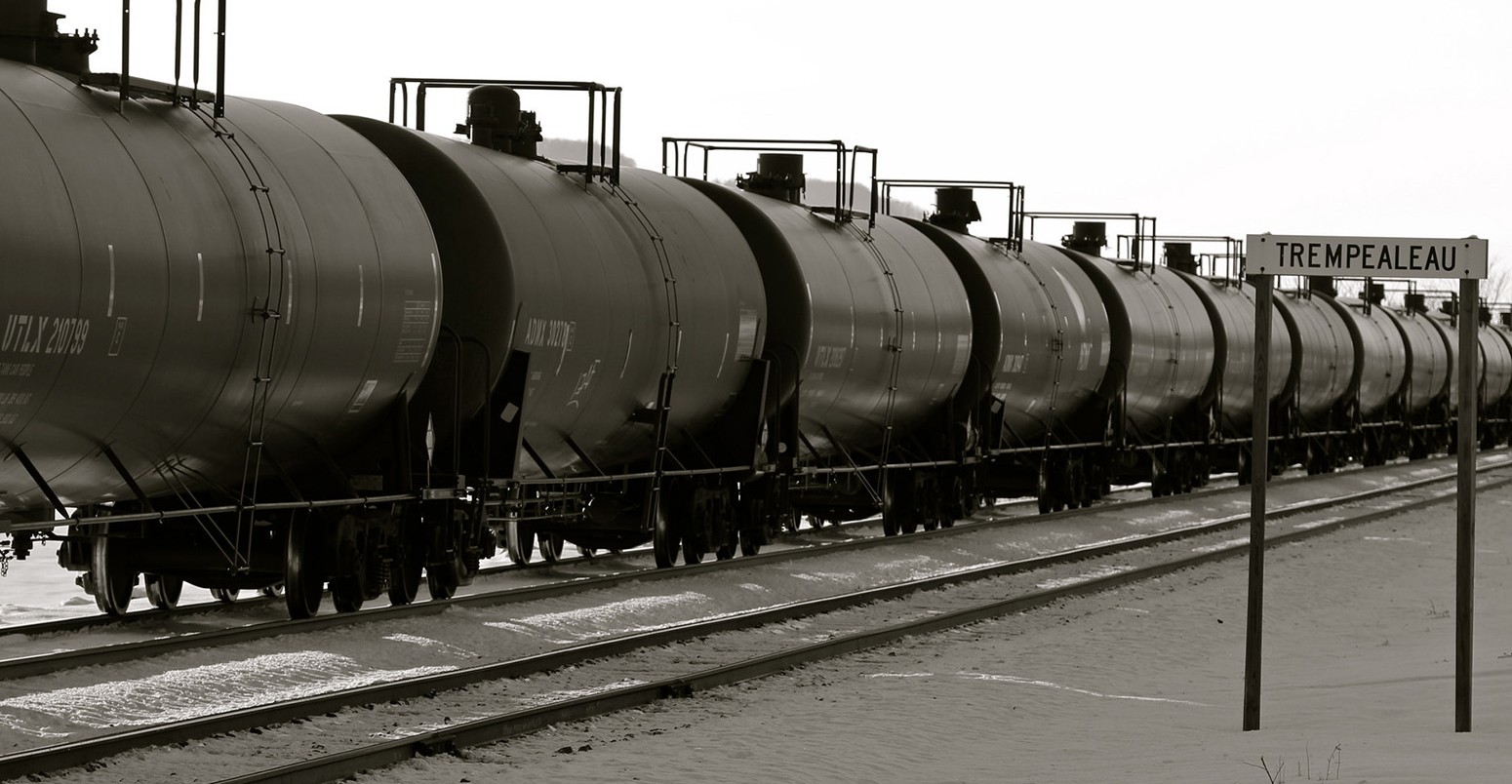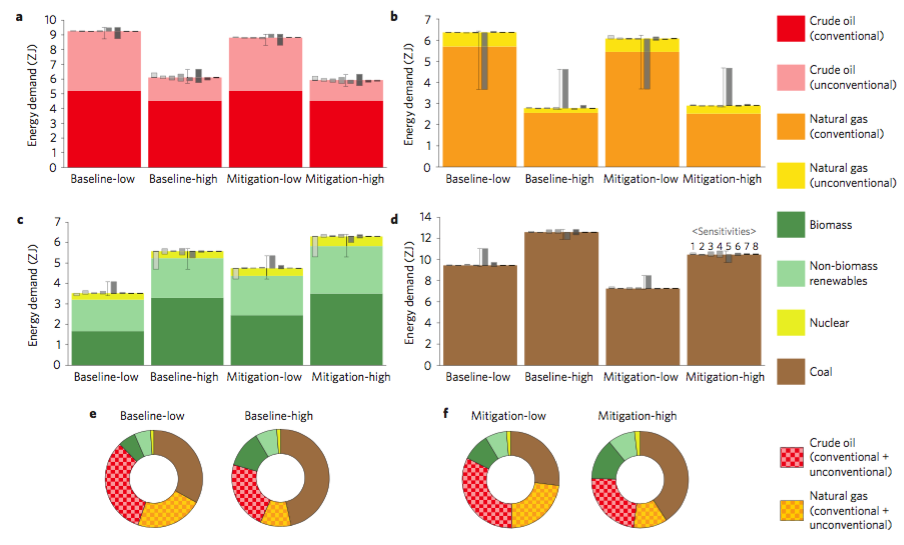
Low oil prices could ‘hamper’ action on climate change, say scientists
Sophie Yeo
06.13.16Sophie Yeo
13.06.2016 | 4:00pmFalling oil prices since 2014 have raised the question of how far the sudden availability of cheaper fossil fuels will impact efforts to tackle climate change.
A new study in Nature Energy assesses how energy use could respond to sustained high and low oil prices. It finds that the price of oil could, in some cases, influence energy demand more than a carbon price.
The study recognises that oil and carbon prices are not the only factor that will come into play when tackling climate change. It also assesses other factors that could influence emissions as the price of oil fluctuates.
Not a vacuum
There is not a direct line between oil prices and carbon emissions. The price broadly shapes the energy landscape, but the trajectory of emissions depends on a range of factors. The study outlines some of the questions that policymakers have had to ask themselves as the oil price has fluctuated:
To answer some of these questions, the researchers modelled scenarios where oil prices are sustained at either low ($40-55 per barrel) or high ($110-120 per barrel) levels up to 2050. These prices are based on the upper and lower ranges for oil seen in recent years, based on monthly averages.
In this context, its low oil price scenario can be seen as a world where innovation in unconventional oil extraction has led to lower production costs. The high oil price scenario represents the opposite scenario, where there is little innovation.
Impact of oil prices alone
The study begins by looking at the impact of high and low oil prices across two different policy scenarios.
The first scenario is the “baseline” case, where there is no carbon pricing scheme in place. The second is the “mitigation” case, which uses a carbon price as a proxy for climate policies.
It puts this carbon price at $13.50 per tonne of CO2, which it says would limit global warming to 2.6-2.7C above pre-industrial levels by 2100, with temperatures peaking soon after. Even this scenario is not wildly optimistic — the UN climate deal adopted in Paris last December sets “well below” 2C as its threshold, or 1.5C if possible.
Low oil prices mean that people use more oil, which could be bad news when it comes to emissions. A low oil price means that emissions could be higher every year by 6-7 gigatonnes (Gt), compared to the high oil price that the researchers modelled. They found that this difference was the same in both the baseline and the mitigation case.
Between 2010 and 2050, this amounts to a large volume of CO2. Cumulatively, it means that emissions are almost 140GtCO2 higher when there is a low oil price, compared to the high price scenario.
On an annual basis, this represents a difference of 3.5 to 4GtCO2 in 2030, and 6 to 7GtCO2 in 2050, between the two oil price scenarios. To put this into context, the Intended Nationally Determined Contributions that countries set out before the UN climate conference in Paris last year amount to savings of around 3.6GtCO2 equivalent in 2030.
This is not a trivial amount. This 140Gt represents three to four years of emissions at current rates, or around 15% of the budget of CO2 that can be emitted between 2010 and 2050 if temperatures are to remain below the 2C limit.
This means that a high oil price could lead to less CO2 being emitted than if the oil price remains low — although the study points out that the savings would not be enough to keep global temperature rise safely below 2C. It explains:
Energy mix
This fluctuation in CO2 emissions for low and high oil price scenarios would be larger, the study says, if it were not for the fact that the whole energy system rebalances in response to the change.
While a low oil price increases oil and gas consumption, it also means that less coal is used, as coal no longer offers such significant cost savings. The reverse is also true: when the oil price is high, less oil and gas is used, but it is replaced with more coal. This is the case as long as carbon pricing remains relatively moderate up to 2050, says the study.
Renewables, consisting largely of biomass and biofuels, follow the same trajectory as coal in these scenarios. David McCollum, a research scholar at IIASA (International Institute for Applied Systems Analysis) and lead author of the study, tells Carbon Brief:

Cumulative energy demand from 2010 to 2050 by primary resource under low or high oil prices, and under “baseline” and “mitigation” policy scenarios. Small grey bars indicate the impacts of additional variables. Source: McCollum et al. (2016).
The study also finds that energy efficiency is likely to suffer in a world of sustained low oil prices, which could also increase emissions.
As the graphs above show, the difference between energy demand hinges on the oil price just as much — if not more — than on the carbon price that the researchers have modelled. The study says that, for oil and gas in particular, the quantities left in the ground could be driven more by their own base prices than by any efforts to implement a carbon price.
The carbon price would have to rise to $40 per tonne of CO2e by 2030 to become the dominant driver, with this continuing to rise over time, the study says.
The plot thickens
The background policies are not the only variables that influence energy and emissions as the oil price changes.
The researchers have also modelled how other developments could affect emissions, in the context of a high and a low carbon price (the impacts of these are shown in the chart above).
Among the uncertain future developments that the scientists have modelled are the costs, availability and scalability of biomass, biofuels and electric vehicles. They also look at the possibility that gas prices decouple from oil prices, where they have historically moved in tandem.
These variations have the potential to cause further fluctuations in the volume of CO2 emitted in the decades ahead. The extent to which these emissions increase or decrease thanks to these other developments depends upon the price of oil and the state of climate policy.
Of all the developments that the researchers modelled, it was the potential for oil and gas prices to decouple that had the greatest effect on emissions. McCollum tells Carbon Brief:
Oil price vs climate policy
The big question that the study tries to answer is whether the CO2 impact of the oil price is large enough to make a real impact on efforts to limit global temperature rise to below 2C.
Under the baseline scenario, the highest possible emissions scenario (a low oil price with variables leading to high emissions) cumulatively emits 158GtCO2 more than the lowest possible emissions scenario (a high oil price with variables leading to low emissions) between 2010 and 2050. When these scenarios play out in the context of more stringent climate policies, the difference increases to 194GtCO2.
This difference is around 20% of the carbon budget for staying below 2C. McCollum tells Carbon Brief that he would classify this contribution as “significant” when it comes to reducing CO2 emissions, but points out that it is not enough to reach the global climate change goals. He says:
Main image: BNSF’s Northern Transcon is the main rail conduit for 600,000+ bbl/d of oil from western North Dakota’s Bakken oil field. B&W image. Trains head south to the St. James tank farm in Louisiana, or east to refiners in Philadelphia or Liden via Norfolk Southern. Credit: Roy Luck/Flickr.
McCollum, D.L. et al. (2015) Quantifying uncertainties influencing the long-term impacts of oil prices on energy markets and carbon emissions, Nature Energy, doi:10.1038/nenergy.2016.77.

